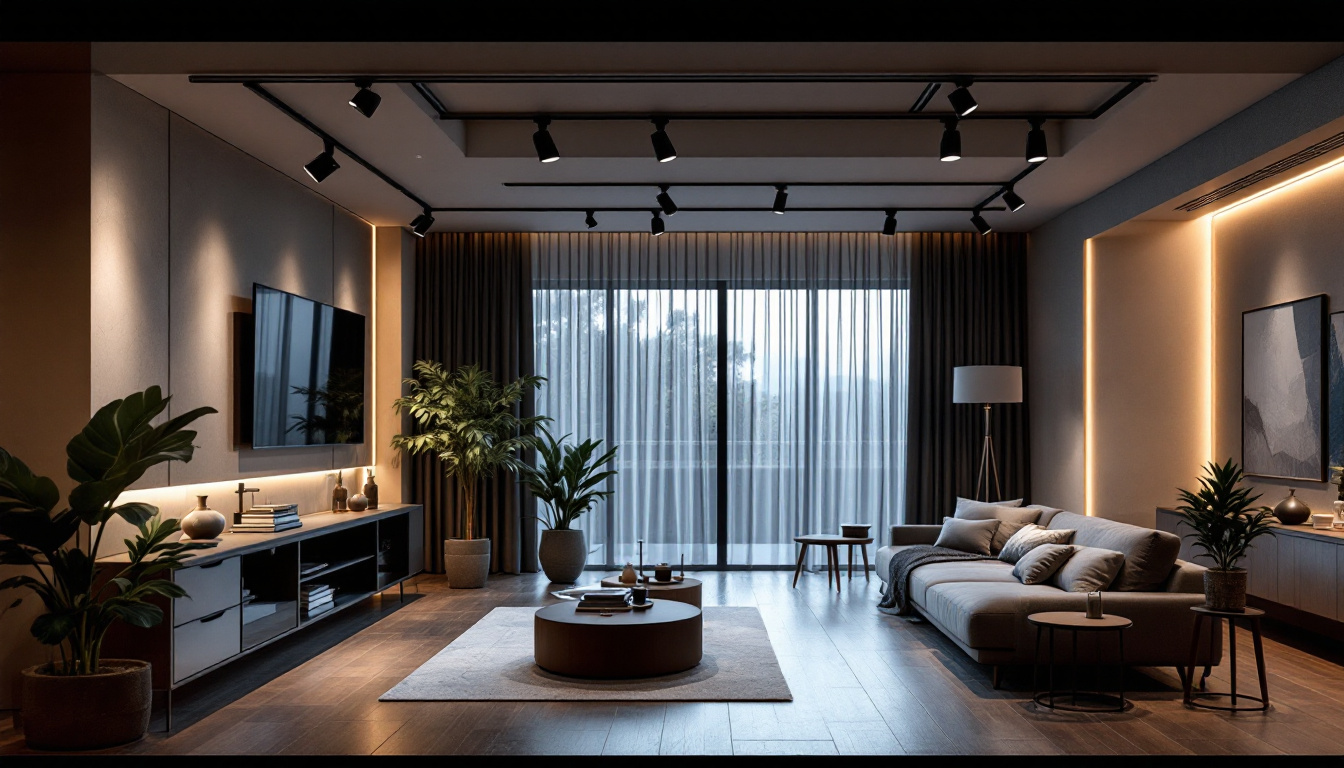
Lighting plays a crucial role in both residential and commercial spaces, and the choice of light switches can significantly impact functionality, aesthetics, and energy efficiency. For lighting contractors, understanding the various types of light switches available and the challenges associated with their installation and use is essential. This article explores the different kinds of light switches, the challenges lighting contractors may face, and strategies to overcome these obstacles.
Standard toggle switches are perhaps the most familiar type of light switch. They feature a simple up-and-down mechanism that allows users to turn lights on or off with ease. These switches are typically mounted on walls and are available in various designs and colors, making them suitable for different interior styles.
One of the advantages of toggle switches is their straightforward installation process. They can be easily replaced or installed by lighting contractors without requiring specialized tools or skills. However, their simplicity means they lack advanced features that modern users may desire, such as dimming capabilities or smart home integration. Additionally, toggle switches can be found in various configurations, including single-pole, three-way, and four-way options, allowing for flexibility in controlling lighting from multiple locations within a home.
Furthermore, toggle switches can also be enhanced with decorative covers and plates, which can add a touch of elegance or flair to a room. Homeowners often choose these switches not just for functionality but also as a means to express their personal style. The tactile feedback of a toggle switch, with its satisfying click, also provides a sense of reassurance that the light is indeed on or off, making it a favorite among many users.
Dimmer switches provide a versatile solution for controlling the brightness of lighting fixtures. They allow users to adjust light levels according to their preferences or the time of day, enhancing the ambiance of a space. For contractors, installing dimmer switches can be a valuable upsell to clients looking for a more customized lighting experience.
However, dimmer switches come with their own set of challenges. Not all light fixtures are compatible with dimmers, particularly LED lights, which may flicker or fail to function correctly when paired with the wrong dimmer. Lighting contractors must ensure they select the appropriate dimmer switch for the specific type of bulb being used to avoid these issues. Additionally, the variety of dimmer types—such as slide, rotary, or touch—can influence user experience, allowing homeowners to choose a style that best fits their needs and preferences.
Moreover, dimmer switches can also contribute to energy savings by allowing users to lower light levels when full brightness is unnecessary. This not only extends the lifespan of light bulbs but also reduces electricity consumption, making dimmers an eco-friendly choice. With the rise of LED technology, many modern dimmers are designed to work seamlessly with energy-efficient bulbs, providing an optimal balance of performance and sustainability.
As technology continues to advance, smart switches have gained popularity among homeowners and businesses alike. These switches can be controlled remotely via smartphones or integrated into smart home systems, offering unparalleled convenience and energy efficiency. For lighting contractors, promoting smart switches can position them as forward-thinking professionals in a competitive market.
Nevertheless, the installation of smart switches can present challenges, particularly concerning compatibility with existing wiring and systems. Contractors must be well-versed in the various smart switch options available and stay updated on the latest technologies to provide clients with the best solutions. Many smart switches also offer features such as scheduling, allowing users to set specific times for lights to turn on or off, which can enhance security and energy management.
In addition, smart switches often come with built-in voice control capabilities, allowing users to operate their lighting through voice-activated assistants like Amazon Alexa or Google Assistant. This integration not only adds a layer of convenience but also appeals to tech-savvy homeowners looking to create a fully automated living environment. As the demand for smart home technology continues to grow, contractors who specialize in smart switches can tap into a lucrative market, providing clients with cutting-edge solutions that enhance both comfort and efficiency.
One of the most significant challenges lighting contractors encounter is compatibility between different types of switches and lighting fixtures. As mentioned earlier, not all dimmer switches work with every bulb type, and smart switches often require specific wiring configurations. This can lead to frustration for both contractors and clients if not addressed properly.
To mitigate these issues, contractors should conduct thorough research on the products they plan to install. Understanding the specifications and compatibility of various switches and fixtures can help prevent costly mistakes and ensure a smooth installation process.
Clients often have high expectations when it comes to lighting design and functionality. They may envision a specific look or feature that may not be feasible due to technical limitations or budget constraints. Lighting contractors must navigate these expectations while providing realistic solutions.
Effective communication is key in these situations. Contractors should take the time to discuss clients’ needs and preferences, educating them about the capabilities and limitations of different lighting options. This approach not only builds trust but also helps clients make informed decisions that align with their vision and budget.
Another challenge that lighting contractors face is ensuring compliance with local building codes and regulations. These codes can vary significantly from one location to another and may dictate specific requirements for electrical installations, including light switches.
Staying informed about local regulations is crucial for contractors to avoid potential legal issues and ensure the safety of their installations. Regular training and continued education can help contractors remain compliant and knowledgeable about any changes in building codes.
To effectively address compatibility issues, lighting contractors should invest time in learning about the various light switches and fixtures available on the market. This knowledge will empower them to make informed recommendations to clients and select the right products for each project.
Additionally, attending trade shows, workshops, and manufacturer training sessions can provide valuable insights into emerging technologies and trends in the lighting industry. By staying informed, contractors can enhance their expertise and improve their service offerings.
Establishing open lines of communication with clients is essential for managing expectations. Lighting contractors should engage in detailed discussions about the project scope, budget, and desired outcomes. By actively listening to clients and addressing their concerns, contractors can foster a collaborative environment that leads to successful project outcomes.
Providing visual aids, such as design mock-ups or product samples, can also help clients better understand the options available to them. This approach not only clarifies expectations but also enhances client satisfaction with the final result.
To ensure compliance with local building codes, lighting contractors should make it a priority to stay updated on relevant regulations. This can involve subscribing to industry newsletters, joining professional organizations, or participating in local building code seminars.
By maintaining awareness of regulatory changes, contractors can proactively adjust their practices and ensure that their installations meet safety standards. This diligence not only protects clients but also enhances the contractor’s reputation as a knowledgeable and responsible professional.
With growing concerns about energy consumption and environmental impact, many clients are seeking energy-efficient lighting solutions. Lighting contractors can address this demand by offering a range of options, including LED fixtures and energy-efficient light switches.
LED lights consume significantly less energy than traditional incandescent bulbs and have a longer lifespan, making them a cost-effective choice for clients. Additionally, pairing LED fixtures with smart switches can further enhance energy savings by allowing users to control their lighting more effectively.
Clients increasingly desire customizable lighting systems that can adapt to their changing needs. Lighting contractors can meet this demand by offering solutions such as multi-zone lighting controls, which allow users to adjust lighting in different areas of their homes or businesses independently.
Incorporating features like timers, motion sensors, and remote controls can also enhance the versatility of lighting systems. By providing these customizable options, contractors can create tailored solutions that improve user experience and satisfaction.
In addition to functionality, clients often prioritize the aesthetic appeal of their lighting solutions. Lighting contractors should be prepared to offer a variety of stylish light switches and fixtures that align with the overall design of the space.
From sleek modern designs to vintage-inspired options, the right lighting choices can elevate the ambiance of any room. Contractors can work closely with interior designers or architects to ensure that the lighting complements the overall design vision, resulting in a cohesive and visually appealing space.
Understanding the different kinds of light switches and the challenges associated with their installation is essential for lighting contractors. By familiarizing themselves with various switch types, addressing compatibility issues, managing client expectations, and staying updated on regulations, contractors can enhance their service offerings and ensure successful project outcomes.
Moreover, by embracing innovative solutions and emphasizing aesthetic appeal, lighting contractors can position themselves as leaders in the industry, meeting the evolving needs of their clients while contributing to sustainable and efficient lighting practices.
Ultimately, the ability to navigate challenges and provide effective lighting solutions will not only benefit contractors but also enhance the overall experience for clients, creating spaces that are both functional and beautiful.
Ready to elevate your lighting projects with the highest quality switches and fixtures? Look no further than LumenWholesale, where we provide lighting contractors with spec-grade products at exceptional wholesale prices. Our commitment to cutting out the middleman means you get the best value without the extra markups. With our vast selection that meets rigorous industry standards, you can confidently tackle any challenge and exceed client expectations. Plus, with the convenience of free shipping on bulk orders, you can stock up on premium lighting solutions without any hidden fees. Don’t compromise on quality or price. Wholesale Lighting at the Best Value is just a click away at LumenWholesale.

Discover how 6 LED can lights are revolutionizing the lighting industry for contractors.

Discover how partnering with canopy light specialists can elevate your business.

Discover essential insights and expert tips on track lighting in this comprehensive guide tailored for lighting contractors.

Discover how heavy-duty waterproof electrical connectors are revolutionizing the lighting industry, offering unparalleled durability and reliability for contractors.